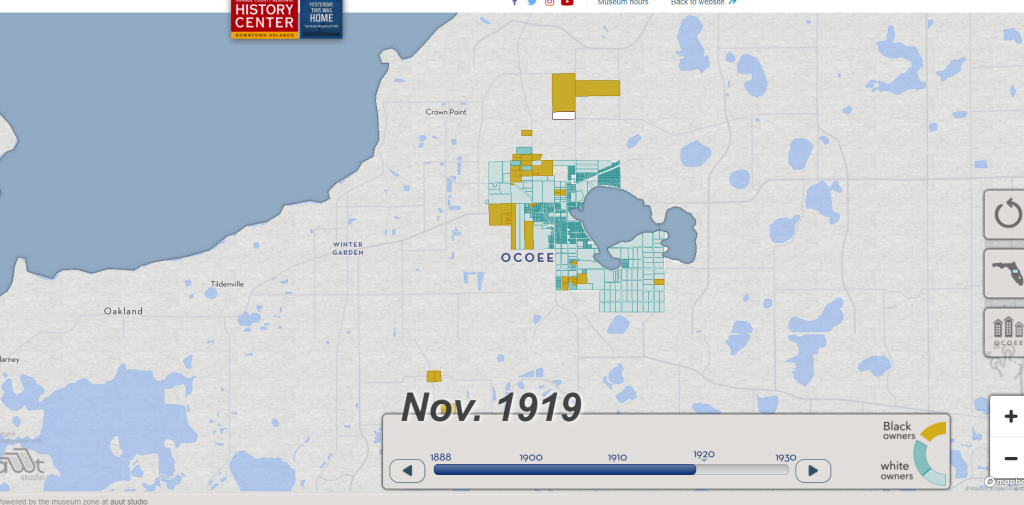Chapter 16: Exhibits
Yesterday, This Was Home: The Ocoee Massacre of 1920

The content encouraged reflection on a century of social transformation, the power of perspective, and the importance of exercising the right to vote, and asked what lessons history can inspire for moving forward.
The History Center is working to build an online version of this exhibition. In the meantime, please explore the resources below, including exhibition-related programming, oral history illustrations, and our digital land deed map.”
https://www.thehistorycenter.org/exhibition/the-ocoee-massacre/
The Orange County Regional History Center crafted this interactive map for the Ocoee exhibition.

Use the timeline slider to see the hard-earned prosperity of Ocoee’s Black community and sudden loss after the massacre occurred in Nov. 1920. When the timeline is set at 1920, you can click each land parcel to discover what happened to its ownership after the massacre. Today, the value of property formerly owned by Black Ocoeeans is worth more than $10 million.
Power, Myth, & Memory in Africana Art Exhibition
Power, Myth, and Memory in Africana Art was a partnership exhibition between Crealde School of Art and other Orange County, Florida, arts organizations that aimed to commemorate the 100 year anniversary of the 1920 Ocoee Massacre. The works displayed demonstrate how artists of African descent have found power and resilience in a racially unjust world. The exhibition was on display at the Hannibal Square Heritage Center in Winter Park, Florida, from January 31, 2020 through May 6, 2020.
Charley Williams’ Winter Park-based collection spans the twentieth century and moves into the twenty-first. Because it focuses on African, Haitian, and African American art, it provides audiences with the opportunity to explore pan-African ideas that manifest themselves into the lives of three different places. Focusing on power, myth, and memory, we have that ability to see the importance of ritualistic ideas such as the “dream-soul,” animals as mediators, religious rituals, burial practices, and the importance of ancestors.
Included are works by Sister Gertrude Morgan, Clementine Hunter, David Butler, Ransom McCormick, Roi David Annisey, and Nellie Mae Rowe, as well as historic African masks, chairs, and fertility objects. These artists lift themselves up through faith, pride, and traditional practices thereby establishing diverse ways of transcending subjugation and finding strength. This artwork has extraordinary technical, historical, and symbolic weight that deserves the same respect given to traditional, western art.
Remembering the 1920 Ocoee Election Day Massacre



